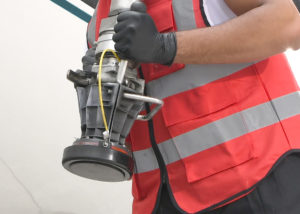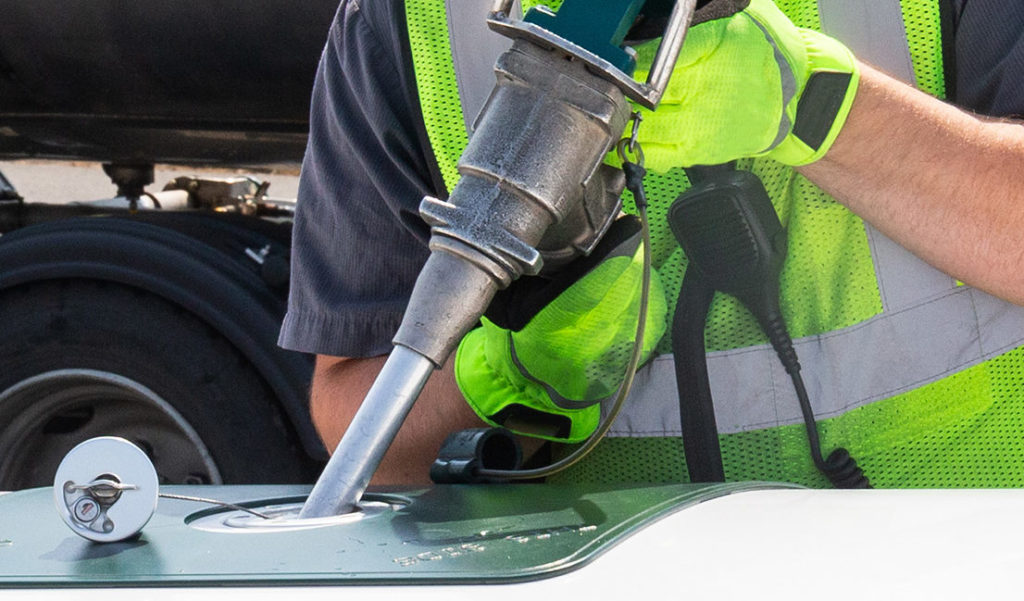Words by Aaron Karp
On October 15, 2019 in Kokomo, Indiana a woman driving her car looked up and saw a low-flying airplane make a sharp left turn, dip and disappear. Soon it became apparent the aircraft, a Piper Aerostar 602P, had crashed, killing the pilot –the lone person on board– and leaving a 100m (330ft) wreckage path.
When US National Transportation Safety Board (NTSB) investigators arrived on the scene, the cause of the accident began to take shape. “On-scene examination revealed the presence of a clear liquid consistent in color, viscosity, oiliness and odor with that of Jet A jet fuel in a fuselage tank and in the fuel lines leading to the fuel manifolds of both engines,” according to the NTSB’s final report on the crash.
The obvious problem: Piper Aerostars do not take Jet A fuel, instead requiring 100 low lead Avgas. The aircraft had been misfueled.
“Post-accident examination of the airplane found Jet A jet fuel in the airplane fuel system and evidence of detonation in both engines from the use of Jet A and not the required 100 low lead fuel,” the NTSB’s final report stated. “Use of Jet A rather than 100 low lead fuel in an engine would result in detonation in the cylinders and lead to damage and a catastrophic engine failure.”
An aircraft misfueling incident is particularly problematic because it will often lead to both of an aircraft’s engines failing. This eliminates the safety redundancy of having multiple engines.
NTSB concluded that “a dual engine power loss” was “caused by the line service technician fueling the airplane with the wrong fuel, which resulted in an aerodynamic stall and subsequent loss of control. Contributing was the pilot’s inadequate supervision of the fuel servicing.”
Misfueling is not a problem for major airlines operating at large airports, as fuel stations serving airliners are nearly always filling the aircraft with Jet A. But at business airports and FBOs, a mix of jets and propeller-powered aircraft can cause confusion.
Catastrophic consequences

Misfueling “outcomes usually are not very good,” says Tim Sorenson, a longtime NTSB senior aviation accident investigator. “There might be enough of the correct fuel remaining in the fuel system so the engines run for a period of time. But the engines won’t keep running and when that incorrect fuel begins flowing… at that point you are dealing with a forced landing situation.”
Randy Harrison, Avfuel’s quality assurance manager, says there can be several reasons aircraft are misfueled: “Inadequate training, misidentifying the aircraft, mislabeling canisters or not carefully reading them. One of the most common reasons is using the incorrect nozzle spout on an over wing fueling nozzle.”
Ann Arbor, Michigan-based Avfuel operates an aviation fueling network of more than 3,000 locations around the world and more than 675 Avfuel-branded FBOs in North America and Europe.
“Aircraft misfuelings have the potential for dire consequences,” Harrison says. “An engine may not function correctly on the wrong grade of fuel. This can cause engine malfunctions, damage and, ultimately, accidents. These consequences usually mean expensive maintenance costs, but can mean loss of life if not caught prior to departure.”
If misfueling is identified before the aircraft’s engines are started and especially before the aircraft takes off, it “can possibly be corrected by just defueling the aircraft,” Harrison says. “At a minimum, the consequences of misfueling include down time for aircraft and personnel, plus added expense for both the aircraft owner and the fueling operator.
“Consequences can accelerate if engines are started and then even further if the aircraft is flown. This can result in everything from engine damage to complete replacement, as well as an aircraft incident or crash.”
The potential consequences of misfueling are what make it such a serious aviation safety threat, even if the occurrences are uncommon. “Thankfully, misfueling doesn’t happen often, but when it does it’s likely to make the headlines because of how serious an issue it is,” Harrison says. “Furthermore, even once is too often given how disastrous the consequences can be.”
Communicating is important
NTSB’s Sorenson said communication is critical to avoid misfueling incidents. “A lot of accidents caused by misfueling from my experience come down to just miscommunication,” he explains. “If you’re the pilot, it’s helpful to be clear. Instead of saying, ‘can you top the plane off,’ provide a tail number and specify what type of fuel you require.”
Even then, adds Sorenson, who is a pilot himself, there is more to do. “Something that I’ve tried to incorporate when I fly is to be present when the airplane is being fueled, and to ensure that the fuel truck that comes out or the fuel pump that is used is placarded for the fuel that you need on board the aircraft,” he says. “Talk to the fueler that comes out and clarify, ‘I’m expecting 100 low lead’. Confirm that with the individual directly.”
Additionally, selecting the correct fuel for an aircraft is not always obvious. “On occasion, there are aircraft that may have been modified with turboprop engines that were not originally produced that way,” Sorenson says. “So, it’s possible that a ramp service employee or fueler may put Avgas in one aircraft, but then the same make and model – or what appears to them to be the same make and model aircraft – may require Jet A.
“If they don’t understand that this aircraft now has turboprop engines and requires Jet A versus one that has engines that need Avgas, that can be a point of confusion.
“So again, that’s where I go back to communication and if the pilot can be there when the aircraft is being fueled, that can help mitigate miscommunication,” he adds.
Avfuel’s Harrison says inexperienced technicians or pilots may not be fully versed on the differences between various aircraft: “Piston aircraft using Avgas will have a propeller while a Jet A fuel-using aircraft could have a jet engine or a turbo-prop. Unseasoned personnel can mistake a piston aircraft as using Jet A fuel, thinking it that it is a turboprop aircraft.
“Some of these aircraft look incredibly similar. The added possibility of the incorrect nozzle spout being on the refueling equipment would allow the spout to fit into the aircraft fueling port, creating a problem.”
Additionally he notes, “fuel openings don’t change in size or type when an engine is converted,” another possible source of confusion.
An NTSB “safety alert” for line personnel warns that “numerous aircraft modifications… can allow misfueling
to occur.”
The organization also notes that Avgas nozzles “are small and round and fit into smaller opening fuel filler ports while jet fuel nozzles are larger and flattened like a duck’s bill, requiring a larger fuel filler port.”
NTSB adds that “non-standard jet fuel nozzles can easily fit into the smaller filler ports of aircraft that require Avgas and allow for misfueling to occur.”
Human factors
Harrison points out there is no technological fix. “Most reasons for misfueling are human factors that may easily be mitigated with proper fuel handling and due diligence,” he says. “The best way to avoid misfuelings is for FBOs and pilots to work together to communicate and verify fueling needs. This includes type, grade and amount for a particular tail number – at every step of the fueling process.”
Do not worry about being overly preventative regarding misfueling, agree Sorenson and Harrison, noting that pilots, aircraft operators, airports, FBOs and aircraft fuel providers all need to be highly vigilant. Any added layers of safety can help. “Having an aircraft ground service guide accessible to personnel so they can look up aircraft and verify their fueling requirements can help mitigate the risks,” Harrison says, noting that the simplicity and low cost of having such guides made available is also beneficial.
Avfuel has developed an Avfuel Training System program “to educate FBO and flight department employees on proper fuel handling procedures, as well as avoidance of misfueling incidents,” Harrison says.
But even well-trained pilots and line service workers must be alert for novel circumstances. For example, NTSB detailed the crash of a Cessna 421C medical aircraft in which the pilot, two medical personnel and the patient were killed.
“The pilot had requested that the airplane be refueled with 40 gallons of fuel,” according to the NTSB. “Because the airport also serviced helicopters with smaller opening fuel filler ports that required Jet A fuel, one of the nozzles on the Jet A fuel truck had been permanently modified with a round nozzle to provide easier access for these aircraft. The pilot was present when the line service person incorrectly fueled the Cessna with Jet A fuel instead of the required avgas. The pilot signed a fuel ticket indicating that the airplane had been fueled with Jet A fuel.”
Experts reiterate how critical preparedness, careful oversight and communication are in avoiding the occurrence of misfueling incidents.
“This risk can be mitigated with some simple due diligence,” Harrison says. “Having the correct equipment for the job and being properly placarded reduces the possibility of a misfueling. Our quality assurance experts always recommend personnel go through annual recurrent training on fuel handling at a minimum. We also recommend pilots carefully watch the refueling process. No one knows an aircraft better than its own flight crew. Being present for an aircraft’s fueling and double-checking invoices are great ways for a pilot to help mitigate a refueling error.”
Harrison does believe misfueling is becoming less of a problem due to the accessibility of highly-quality training systems and information. “High employee turnover at FBOs makes rigorous and consistent training a must,” he concludes.





